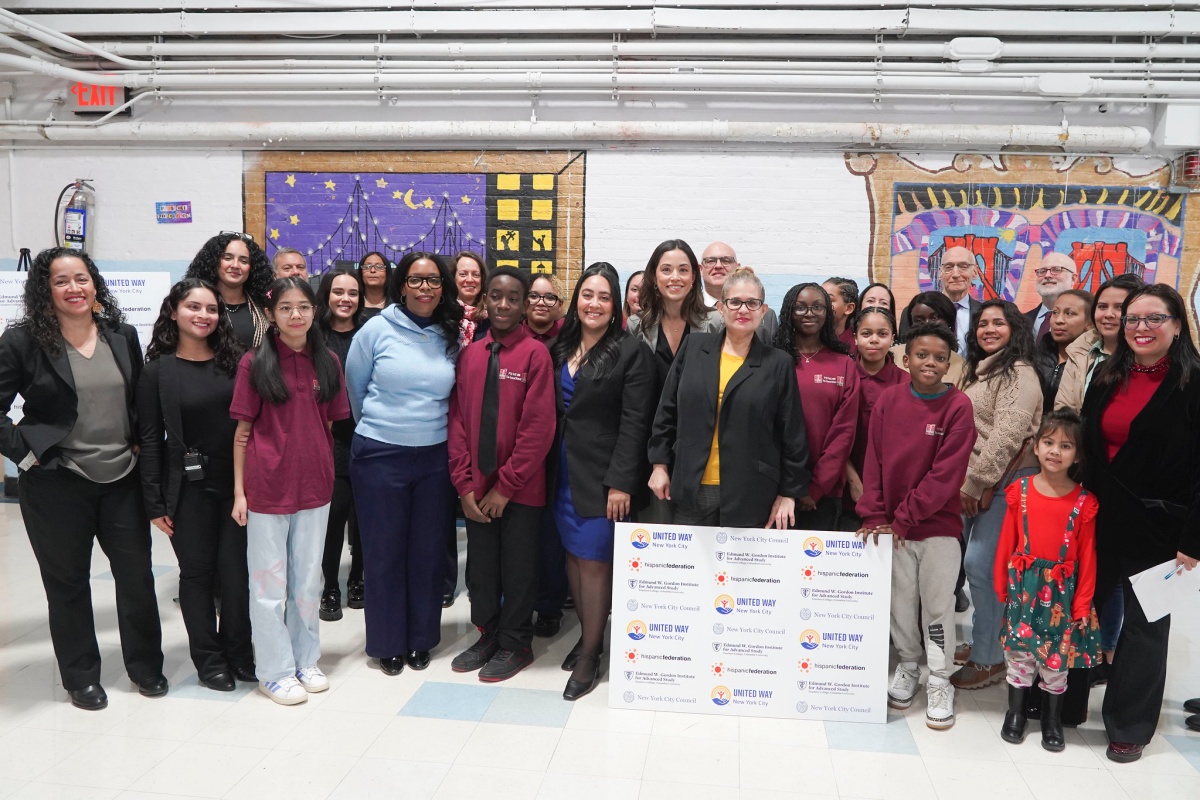Future New York City public school classrooms will immerse students in a curriculum centered on Latinidad cultures and histories, thanks to a new collaboration between TC’s Edmund W. Gordon Institute for Advanced Study, United Way of New York City (UWNYC) and the Hispanic Federation — the organizations announced on Dec. 2.
Launched with a historic $3 million in funding from the New York City Council as part of its Education Equity Action Plan (EEAP) initiative, the three-year project will allow educators to incorporate interdisciplinary, hands-on lessons into existing practice and standards. The effort addresses 2019 findings that, despite Latine/x youth comprising more than 40 percent of NYC School’s student body, more than 83 percent of taught books at that time were written by white authors — nearly five times more books than all authors of color combined.
“Culturally-relevant education plays a crucial role in supporting the success of all students, who deserve enriched learning environments that reflect the diversity of our city and world,” said Teachers College President Thomas Bailey, who appeared with local officials and fellow education leaders at PS 188/The Island School in Lower Manhattan for the announcement.
“The Latine Studies Curriculum is an essential pursuit in this vision for more equitable, effective education,” continued Bailey. “Teachers College is honored by the opportunity to apply our deep expertise in culturally relevant education research, curriculum development, pedagogy and evaluation to this new initiative through leadership from the Edmund W. Gordon Institute for Advanced Study. We are grateful for the leadership of the City Council in advancing this critical work for New York's children.”
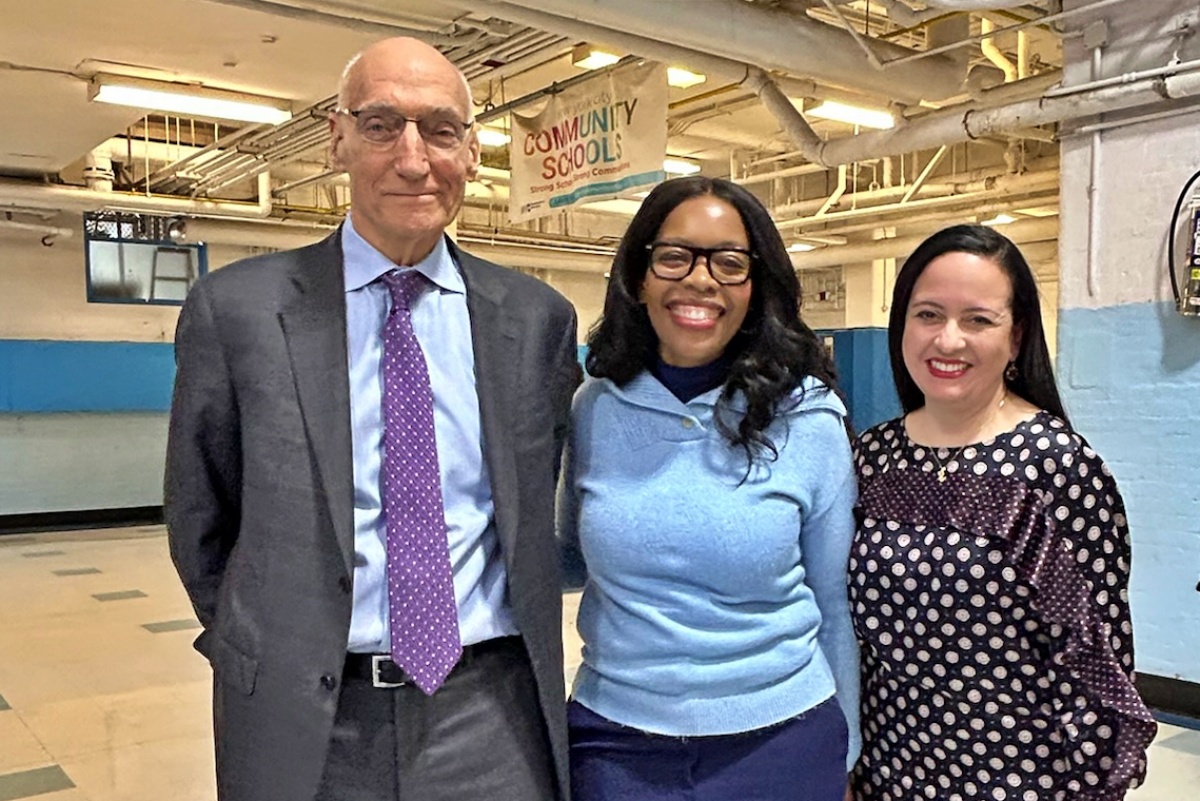
Teachers College President Thomas Bailey; Rita Joseph, New York City Council Member and Chair of the Committee on Education; and Limarys Caraballo, Associate Professor of English Education. (Photo: TC Archives)
The Gordon Institute, UWNYC and the Hispanic Federation will collaborate closely with local organizations and educators to leverage community-based recommendations. In the first year, the Gordon Institute will lead research, design and mapping of the culturally-responsive curriculum, advise on community engagement, and assist with a summit to unveil the blueprint for the new curriculum, planned for next May.
For Gordon Institute Director Ezekiel Dixon-Román, New York City’s investment in the Latine Studies Curriculum is a decisive rejection of anti-diversity rhetoric and school policy at a critical political moment. Recalling the foundational work of the Young Lords Organization in the 1960s, Dixon-Román emphasized that the “long-struggled-for curriculum…will dynamically encompass the varied history, culture, and experiences of Latinidad.”
“[This work] will gift NYC public school students with both the critically important histories as well as situated knowledges that are necessary for equity through culturally responsive and sustaining educative experiences,” said Dixon-Román, Professor of Critical Race, Media, and Educational Studies. “We are very excited to be working with UWNYC and Hispanic Federation to develop and deliver a path-breaking curriculum on the studies of Latinidad; that which consists of content that is key to the story of this New York City and these United States.”
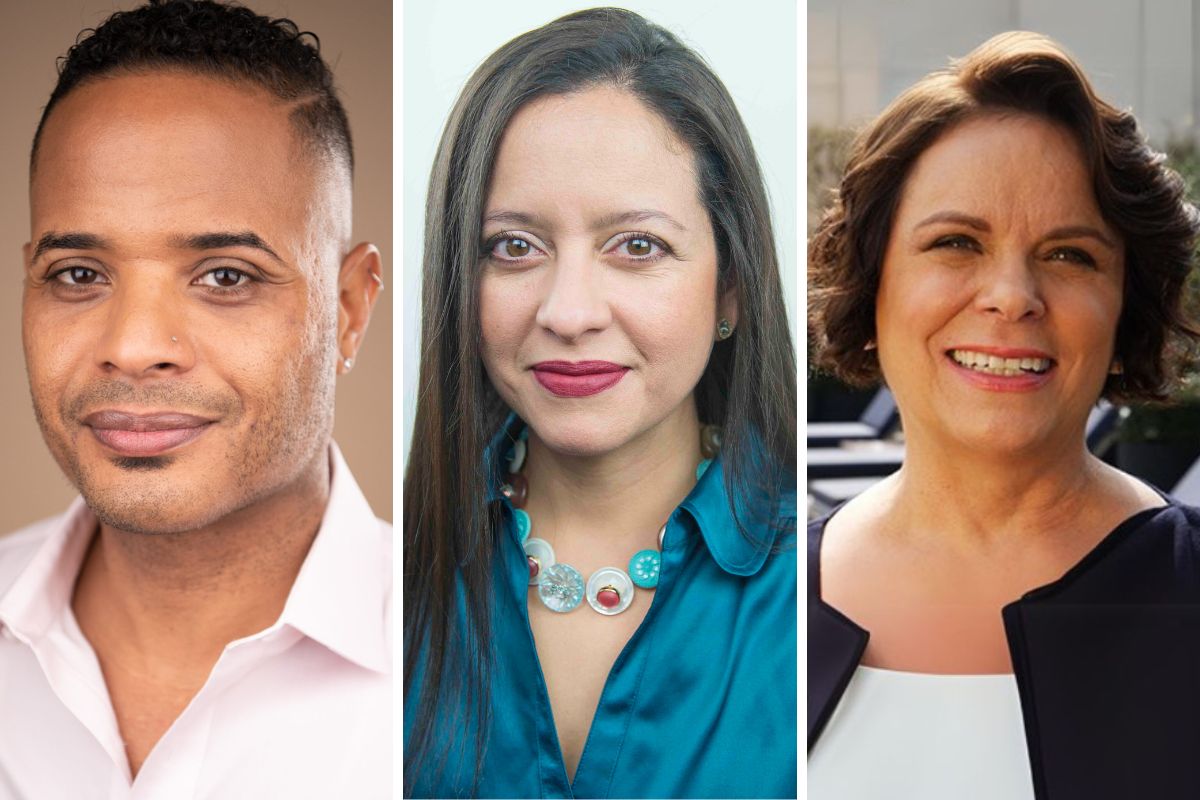
Ezekiel Dixon-Román, Director of the Edmund W. Gordon Institute for Advanced Study, and Professor of Critical Race, Media, and Educational Studies; Limarys Caraballo, Associate Professor of English Education; and Regina Cortina, Professor of Education. (Photos: TC Archives)
The Latine Studies Curriculum builds on the inclusive education work of the Black Studies Curriculum, which was developed by TC’s Black Education Research Center with community partners and officially launched earlier this year.
In this next chapter, project leaders for the curriculum will begin developing dynamic classroom materials that can be integrated into required standards across kindergarten through 12th grade, including complementing the Passport to Social Studies curriculum. Preliminary work includes assembling an advisory board and expert reviewers, assessing existing materials, and organizing town halls to engage New York City’s Latino communities in the process.
To understand where the Gordon Institute’s work is headed, one must acknowledge the long-standing feelings of marginalization among many Latinos in schools and elsewhere.
“Latinos are always seen as immigrants, which means that, historically, no one sees a responsibility to acknowledge who they are in educating them,” says TC’s Regina Cortina, Professor of Education, who is co-leading the project with fellow faculty member Limarys Caraballo (Ed.D. ’12). “Students currently in the system have very little opportunity to understand the history of their communities and how activism has impacted their education in New York City. This initiative will help our students and their communities to recognize themselves in the curriculum is not something that has happened until now.”
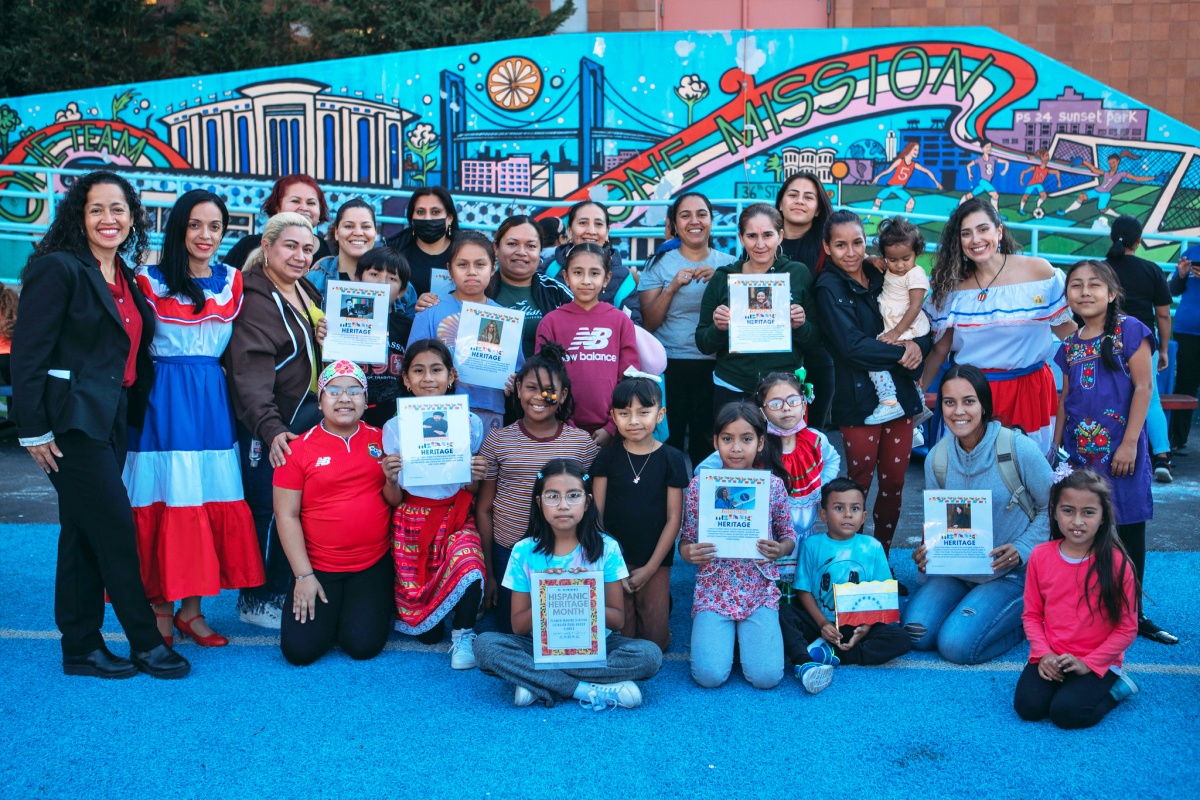
Students at Public School 24 celebrate Hispanic Heritage Month with members of the New York City Council in 2022. (Photo: New York City Council)
And although schools have made some efforts to integrate some elements of Latinidad into the curriculum, this new, sweeping effort aims to empower students and their families as drivers of their own education — a critical methodology in this new chapter for New York’s Latinx people.
“What does it mean to critically rethink the trajectory of an immigrant community, grounded in their oral histories, and through the lens of their own grassroots activism?” says Caraballo, Associate Professor of English Education, who — with Cortina and Dixon-Román — sees agency as a core component of this work.
“We want the curriculum to highlight and celebrate the complexity and texture of Latinidad throughout New York City, and provide rich lenses for students to engage with diverse Latinx communities in an expansive way that helps them to see themselves as agents of change,” says Caraballo, whose work specializes in teacher preparation and youth participatory action research. “The curriculum will be a means for understanding — not just where they came from — but the histories of activism, change and transformation that their communities have also fostered. We’re building that criticality into the curriculum.”
As part of the community-oriented focus, the Gordon Institute experts envision a modern, “living” curriculum that will be regularly updated. “We have more affordances than ever before — for the classroom, for teaching and for pedagogy,” says Dixon-Román. “We can create a curriculum with multimodal and engaging content. It doesn’t have to be static, and we can build it in a way that makes it alive and actionable.”
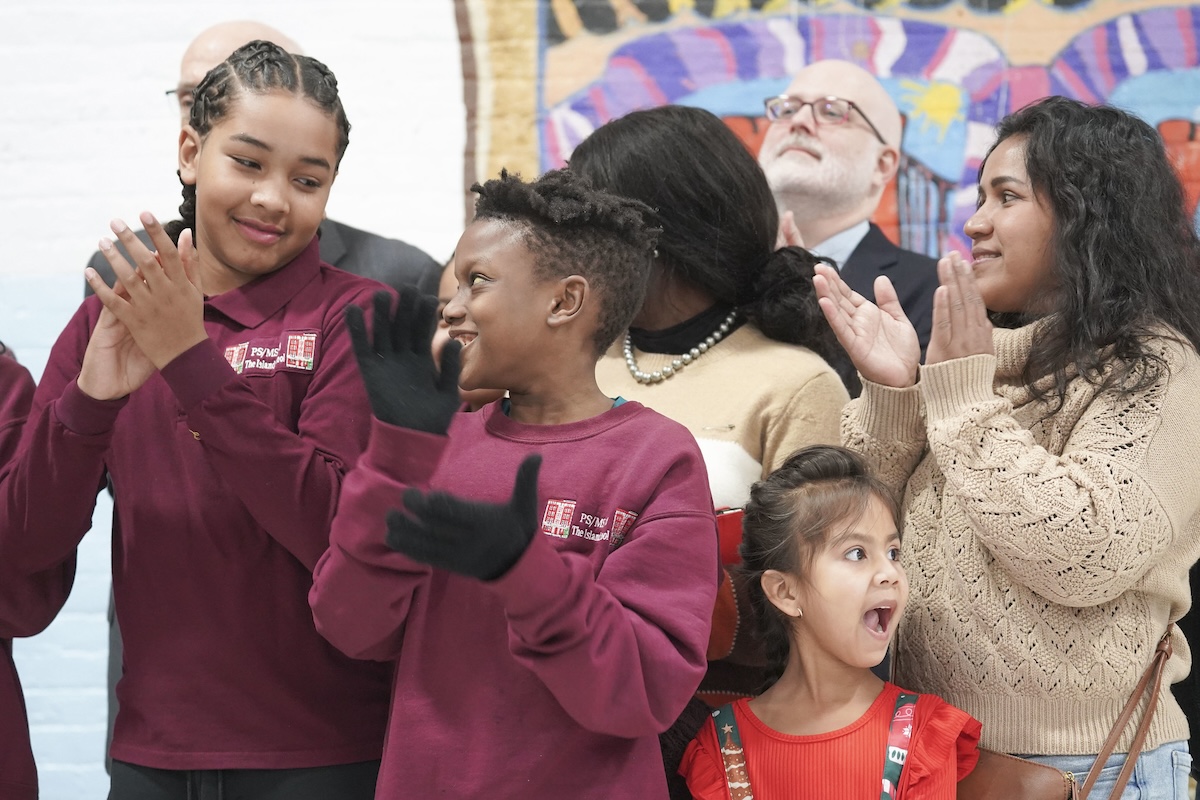
Students at PS 188/The Island School during the announcement of the Latine Studies Curriculum. (Photo: Gerardo Romo / NYC Council Media Unit)
Closely examining existing standards, developers will prioritize strategies and lessons easily integrated into core curricula related to various academic disciplines, including STEM fields, which offer a means to “engage in these cultural perspectives,” notes Caraballo, with Dixon-Román adding that the curriculum “can open up and expand the study” of math and science to include “the ways of knowing from the multiplicity of Latinidad.”
As experts from TC’s Gordon Institute and local partners advance this work, the Latine Studies Curriculum and its potential impact on New York’s public school students sit a few years in the distance. Yet the fully-realized vision of a more equitable, inclusive school experience for all children remains a central goal of this collaborative and intergenerational project — with scholars like Caraballo, Dixon-Román and Cortina at the forefront of building the future of culturally-responsive schools.
“My dream would be for students who come into the education system to not just assimilate into a middle-class American culture, and lose all of the social capital and culture from their communities,” explained Cortina. “For schools to recognize who children are and where they come from — and stress this part of their identity doesn’t have to be erased. The cultural wealth they bring with them to school is so important for the education of children and young adults.”
